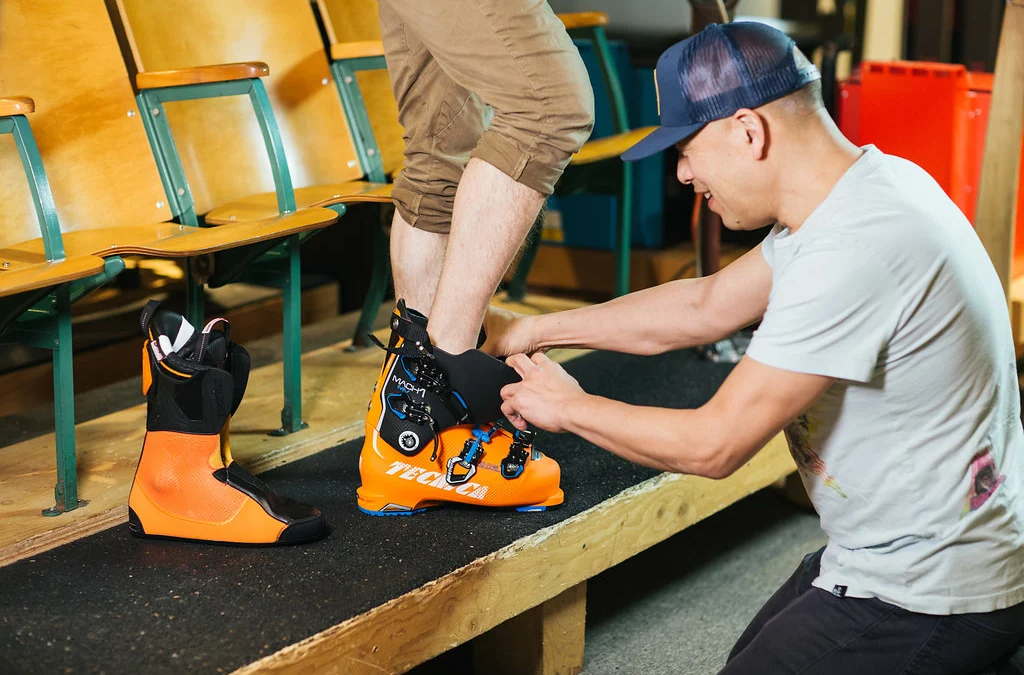As winter approaches and the mountains get blanketed in snow, skiing enthusiasts eagerly anticipate the upcoming ski season. While preparing your gear and honing your skiing skills are essential, it’s equally important not to overlook the well-being of your feet. After all, your feet are the foundation of your skiing adventures, and ensuring their health and comfort can make all the difference on the slopes. In this blog post, we’ll explore some valuable tips and tricks to help you prepare your feet for an unforgettable ski season.
Assess Your Footwear
The first step in preparing your feet for ski season is to evaluate your ski boots and other related footwear. Check for any signs of wear and tear, including cracks, loose buckles, or worn-out liners. Ill-fitting boots can cause discomfort, blisters, and even hinder your performance on the slopes. If your boots are in poor condition or no longer fit properly, consider investing in new boots that provide the necessary support, warmth, and a snug fit.
Get Your Feet Measured
Before purchasing new ski boots, visit a professional boot fitter who can accurately measure your feet. They will consider factors like foot length, width, arch height, and any specific foot conditions you may have. By ensuring your boots match the contours of your feet, you’ll enhance comfort and reduce the risk of foot-related issues.
Strengthen and Condition
Skiing puts significant demands on your feet and lower leg muscles. Preparing your feet for the upcoming season involves strengthening and conditioning exercises. Perform exercises such as calf raises, toe curls, and ankle rotations to improve stability, balance, and strength. Incorporating these exercises into your regular fitness routine will not only enhance your performance but also reduce the risk of injuries on the slopes.
Break-in Your Boots
New ski boots can be stiff and uncomfortable initially, which can cause discomfort and blisters on the slopes. To avoid this, gradually break in your boots before the ski season. Wear your boots around the house or for short walks, gradually increasing the duration over several weeks. This process will help your boots mold to the shape of your feet and ensure a more comfortable fit when you hit the slopes.
Common Foot Pathologies
When skiing, there are several foot pathologies that you should be aware of and take precautions to avoid. Here are some common foot issues that skiers may experience:
-
Chill Blains: Extremely cold temperatures and exposure to snow can lead to an abnormal blood vessell response, which can affect the feet if they are not adequately protected.
-
Plantar Fasciitis: The repetitive stress of skiing can irritate the plantar fascia, a thick band of tissue that supports the arch of the foot. This can result in heel pain. Proper arch support, stretching, and wearing supportive boots can help prevent plantar fasciitis.
-
Morton’s nueroma: refers to thickening of the tissue that surrounds the digital nerve leading to the toes. This thickening can lead to various levels of pain or discomfort in the forefoot that may limit your ability to perform certain activities. Ensuring proper boot fit and using footbed inserts with metatarsal support can help alleviate this issue.
-
Stress Reactions: Repetitive impact and high forces on the feet while skiing can increase the risk of stress fractures, especially in the metatarsal bones and long the shins. Adequate rest, proper conditioning, and avoiding excessive impact can help prevent stress fractures.
It is important to note that everyone’s feet are unique, and individual factors such as anatomy, biomechanics, and previous injuries can contribute to specific foot pathologies. If you have any concerns or pre-existing foot conditions, it is recommended to consult with a medical professional or a podiatrist before engaging in skiing activities. Both our podiatrists Jeremy and Sophie have a keen interest in skiing and can provide you with personalised advice and recommendations based on your specific needs.

